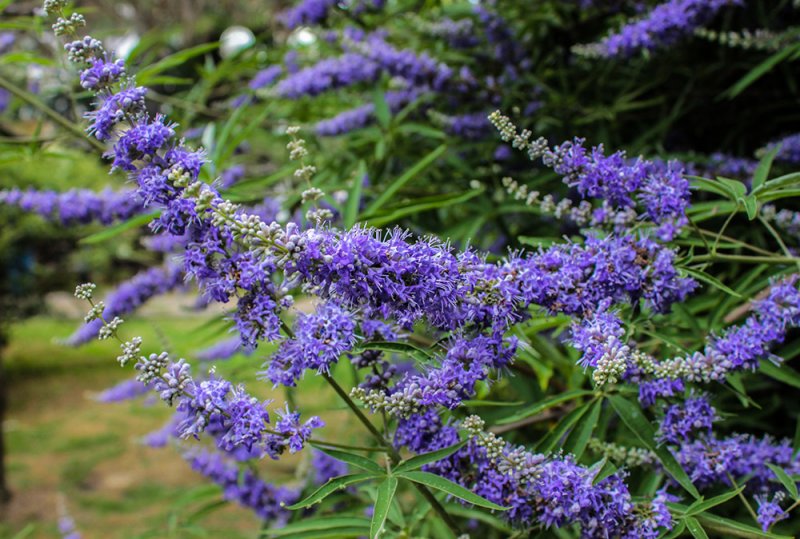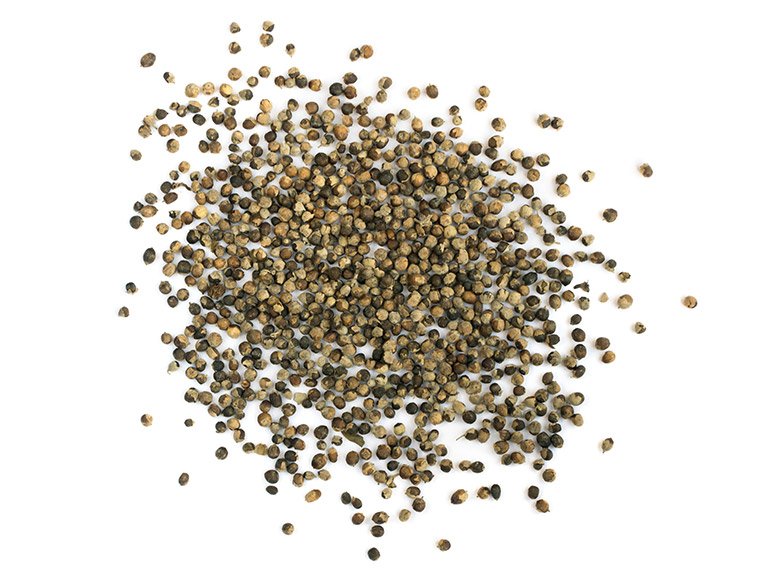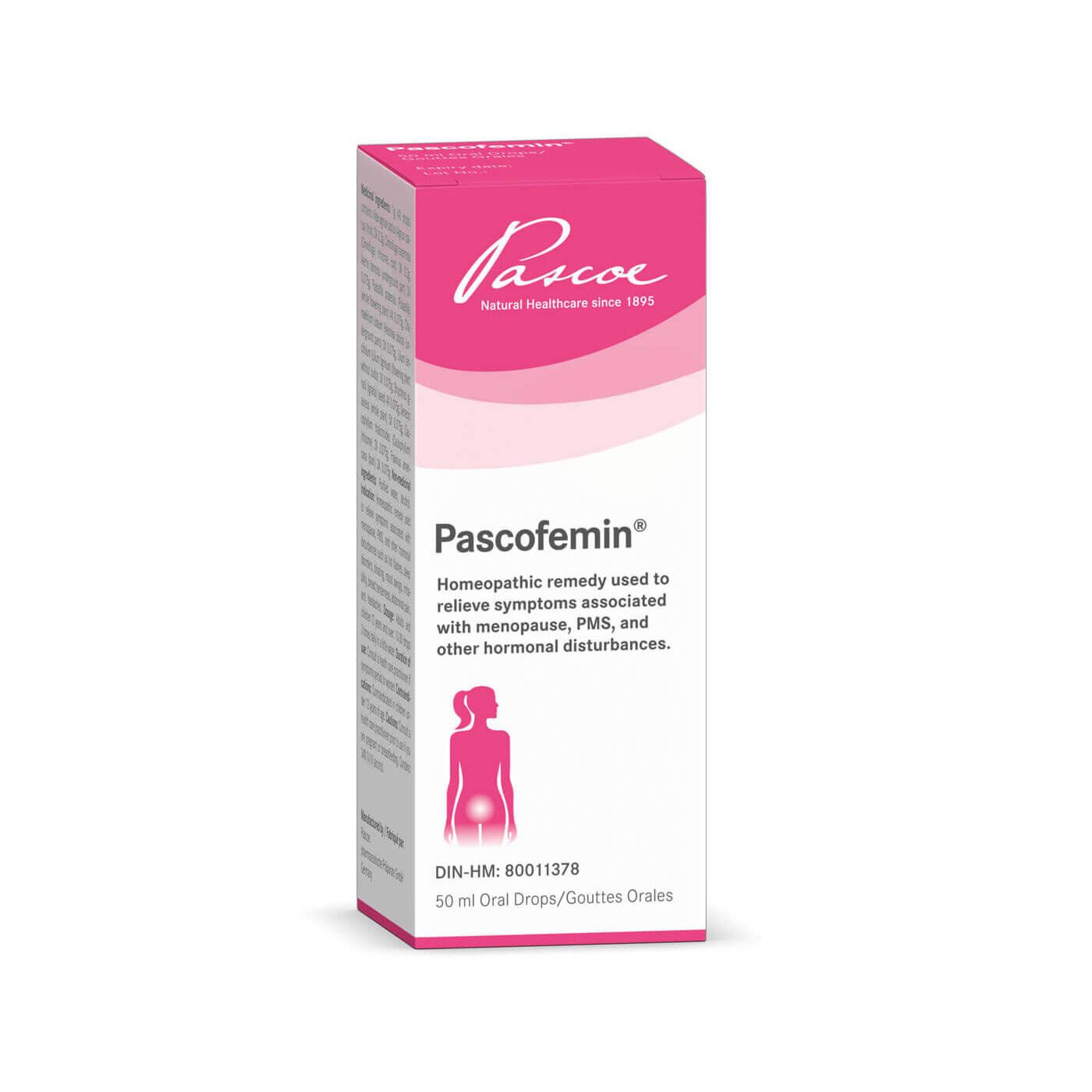Thyme


Chasteberry
The Chasteberry tree (Vitex agnus-castus) is a flowering shrub known for its long history in balancing hormones.
Already back in ancient Egypt, Greece, and Rome, has the vitex chasteberry been used to treat many gynecologic complaints.
In medieval Europe, the chaste berry was popular among monks for its alleged ability to reduce unwanted sexual desire. This led to the common names of monk's pepper and chaste tree.
However, this traditional application is not evidence-based or supported by current research.
Over the past 50 years, chasteberry extract has been used widely in Europe for gynecologic conditions due to hormonal imbalance. This includes menstrual cycle problems, premenstrual syndrome (PMS), cyclical breast tenderness, as well as symptoms related to menopause.
The fruit of the chaste tree is generally well tolerated and chasteberry side effects are usually rare.
Origin and types
Vitex is the largest genus in the mint family (Lamiaceae) and includes 250 species worldwide.
Vitex agnus-castusis one of the few temperate-zone species. It grows as a shrub or small tree and comes from the Mediterranean and western Asia.
For its fragrant flowers, it is also cultivated as an ornamental tree in the southeastern United States.
This vitex tree is known by many different names. Commonly it is called vitex, chaste tree or chastetree, chasteberry, lilac chaste tree, or monk’s pepper.
Besides its use in basketry, it is the most common vitex used in medicine. Its dried fruits are prepared as chasteberry extract.
What does the plant look like?
The chaste tree is a tree or shrub that grows to a height of 1 to 5 meters.
Its aromatic leaves are dark green on top and grey-green on the bottom. They have 5 to 7 leaflets splayed out like an open hand and are sometimes confused with cannabis plants.
In late spring, the tree bears beautiful flowers that can be blue-violet, purple, or white. In late summer, the fragrant flowers are followed by dark-purple berries.
These chaste berries are about the size of a peppercorn.
Where does the name come from?
Vitex is thought to come from the Latin word “vieo” which means to weave or to tie up. It refers to the tree’s use in basketry.


The species name “agnus-castus” resulted from a misinterpretation of the original Greek name, “ágnos”, meaning holy, pure, or chaste. At some point, the original Greek word “agnos” was replaced by “agnus”, the Latin word for lamb.
The second part, castus, comes from the Latin word “castitas”, meaning chastity.
The common names chaste tree or monk’s pepper refer to the herb’s use in the Middle Ages. Back then, monks are said to have used the fruit to remain chaste.
Although this use is not based on evidence, it points to the potent effects of the herb on hormone levels.
Vitex agnus-castus as a medicinal plant
Chasteberry extract’s health benefits have been recognized since ancient times. Today, it is mainly used to treat PMS, breast pain and menstrual irregularities.
A lot of studies have been done mostly in Europe to clarify whether using chasteberry extract benefits these symptoms.
The researchers studied the effects of chasteberry on hormones in women with a diagnosis of PMS. The patients used chasteberry extract over three menstrual cycles. They then self-assessed their change of irritability, mood alteration, anger, headache, breast fullness, and other menstrual symptoms including bloating.
This clinical trial reported that dry extract of agnus-castus fruit is effective and well-tolerated to relieve PMS symptoms.
In 2005, a review of adverse events related to treatment with chasteberry was done. The reported adverse effects were mild and reversible. Based on the available safety data, Vitex agnus-castus extract seems to be a safe herbal medicine.
The German Commission E approved the use of chasteberry for irregularities of the menstrual cycle, cyclical breast discomfort, and PMS.
Health Canada approves its use in herbal medicine to help
- relieve premenstrual symptom
- stabilize menstrual cycle irregularities (hormone normalizer)
- relieve menopausal symptoms, such as hot flushes.
Medicinal Properties of Vitex agnus-castus
- Hormone "normalizer" that helps to restore hormonal balance in the body (especially progesterone and prolactin levels)
How and what is it used for?
Chasteberry has been traditionally used to help with a variety of conditions and purposes, including:
- Treatment of premenstrual syndrome (PMS)
- Menstrual cycle irregularities
- Breast pain linked to menstruation (cyclic mastalgia)
- Symptoms of menopause
- Reducing sexual desire
- Hormonal acne
Its traditional use to enhance breast milk production is scientifically not well supported and should be discouraged.
Other potential vitex chasteberry benefits might be reduced migraines during menstrual cycles, epilepsy prevention, and anti-inflammatory effects of the herb. But more studies are needed to support these claims.
Essential oils from chasteberry fruits and leaves have been used as insect repellent. They also might have antibacterial effects which explain the use of vitex chasteberry for acne.
Chasteberry supplements from dried fruits are available in many different formulations. This includes vitex chasteberry drops, capsules, tablets, and chasteberry tea.
How does it work?
The exact mode of Vitex’s action is only partially understood. Scientists believe that agnus-castus extract has indirect, regulatory effects on various hormones, especially prolactin and progesterone.
One proposed mechanism is that chasteberry causes a decrease in prolactin. Prolactin is better known as the milk-producing hormone.
Patients with premenstrual syndrome (PMS) seem to produce too much prolactin. These high prolactin levels can cause some discomforts, like breast tenderness or breast pain, and failure to ovulate.
Depending on the dosage, chasteberry vitex extract benefits lower prolactin levels. This results in decreased estrogen levels and increased progesterone levels. Also, the luteinizing hormone (LH) levels are stimulated and the corpus luteum can be fully developed.
In short, vitex-containing herbal medicine helps to re-establish hormonal balance during the menstrual cycle.
What makes Vitex agnus-castus different?
Vitex agnus-castus does not contain hormones or hormone-like substances. It prompts the pituitary gland in our body to produce more of its own hormones, such as progesterone and LH. Both are necessary for the female body to ovulate regularly and develop a healthy cycle.
This helps balance out the estrogen dominance and excessive prolactin levels that are at the root of many cycle issues. Therefore, some consider chasteberryas a “natural replacement alternative for estrogen replacement therapy”.
In general, Vitex works well but is not fast-acting. So it may take around 3 to 4 months of regular use to see beneficial effects.


Cautions and drug interactions
Vitex agnus-castus is considered safe for most people. Side effects are usually mild. They can include nausea, stomach issues, headache, and skin rash.
However, vitex can affect progesterone and estrogen levels in the body. Therefore, women with hormone-sensitive cancer, such as breast cancer, should not use chasteberry.
Also, a healthcare provider should be consulted prior to use if you are taking hormone-containing medications. This includes progesterone preparations, oral contraceptives, and hormone replacement therapy. The effectiveness of the birth control pill may be decreased by the herb.
There is no data available that show whether chasteberry is safe during pregnancy or lactation. It is also not clear yet if it is beneficial to take chasteberry for fertility or if chasteberry can help to get pregnant.
Chasteberry may interfere with drugs that affect levels of a brain substance called dopamine. Thus, people who are taking medication to treat Parkinson’s disease or certain antipsychotic drugs should be cautious.
Remember to speak to your healthcare provider before taking any new medications, including natural health products and dietary supplements.
Pascoe products that contain Vitex agnus-castus:
Disclaimer
Pascoe Canada does not offer health or medical advice as we are not a healthcare practitioner. Please speak with your healthcare practitioner before beginning any program related to nutrition, diet, exercise, fitness, medical, and/or wellness. All content published by Pascoe Canada is developed through collaborating with licensed medical professionals and contributors. This includes text, graphics, images, and other material on the website, newsletter, and products (“Content”). This content is for informational purposes only and does not constitute medical advice. The content does not substitute professional medical advice, diagnosis, or treatment. Please always do your own research on whether this is for you along with your healthcare practitioner advice. Always consult your healthcare practitioner prior to use specific herbs because you might have underlined conditions needs professional care. The content is general in nature and are subject to change. It is not intended to cover all possible uses, directions, precautions, warnings, drug interactions, allergic reactions, or adverse effects.


